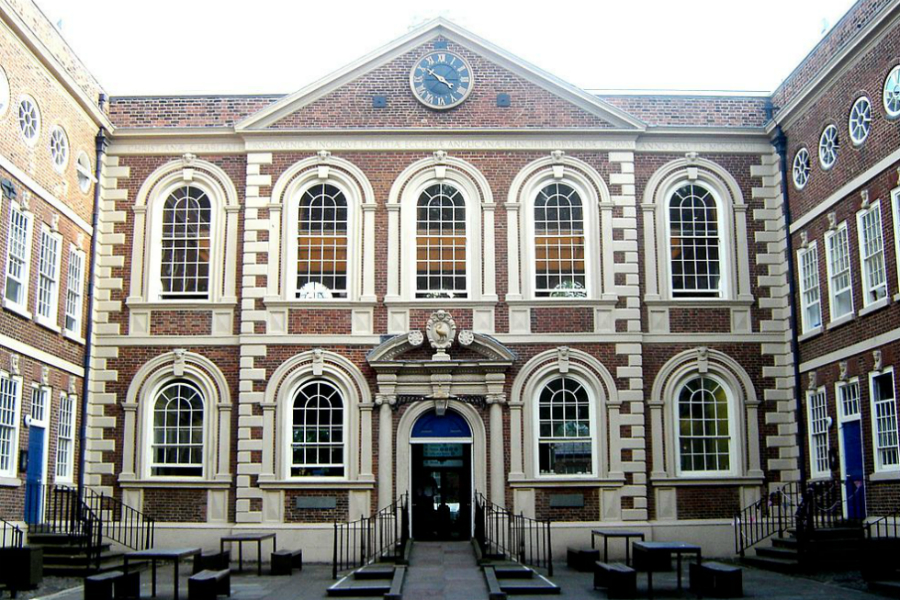Happy Anniversaries!

With cuts beginning to bite, we take a look at a remarkable cluster of anniversaries in Liverpool’s arts sector…
Funny how things coincide; you’d almost believe that some colossal level of planning and logistics had been involved in making 2013 THE year for anniversaries among Liverpool’s arts institutions and the sector more generally. While it’s our guess this probably isn’t the case, it remains uncanny that last weekend, being the occasion of FACT’s 10th birthday, was just the start of proceedings.
FACT of course is now as much part of Liverpool’s cultural landscape as can be; serving as gallery, cinema, cafe and bar, the multi-purpose venue quickly established itself as a force, carving a niche for itself with challenging, ground-breaking and diverse exhibitions from artists such as Pipilotti Rist, Kurt Hentschlager and Apichatpong Weerasethakul.
But as significant as FACT inarguably has become, it is Tate Liverpool, celebrating 25 years, which one could describe as something of a great enabler. As FACT director Mike Stubbs acknowledged in a recent TDN interview: “If Tate hadn’t set up in Liverpool, FACT wouldn’t have happened.” One of the largest galleries of contemporary art in the UK outside London, Tate Liverpool’s contribution to the city’s cultural regeneration is hard to over emphasise.
But of course it is regeneration more generally where Tate’s impact can be felt every bit as keenly. Don’t forget that, 25 years ago, Liverpool had reached the nadir of its ‘managed decline’ period, with Minister for Merseyside Michael Heseltine cast as the unlikely white knight, striking an often lonely figure, crusading as he was for a post-industrial city. Where better then for Tate to be situated than the then-derelict Albert Dock complex?
In that quarter of a century, more than any other gallery on Merseyside (and perhaps more than anything full stop), Tate Liverpool has been responsible for re-establishing the city as a destination; it’s certainly no coincidence that other galleries such as the Walker and the Open Eye have coordinated openings to fall on the same day as those at Tate, nabbing members of the press up from London to pop over and catch another show before jumping back on the Pendolino for home.
Without a doubt, London-based media can increasingly be found milling around the Albert Dock on press days, and with good reason. Originally created with the intention of displaying work from the Tate Collection, Tate Liverpool has quickly evolved to become the temporary home of genuinely blockbusting exhibitions, attracting shows featuring Klimt, Picasso and the recent, stunning, Turner Monet Twombly.
It’s not a huge leap to argue that its presence here played a big part in winning the bid for European Capital of Culture, secured a decade ago and taking place 5 years ago, in 2008. In those intervening years, it’s still difficult to properly quantify its legacy, but certainly, having moved back to the city at that very time, Liverpool has become an increasingly vibrant place, particularly in the cultural sector.
Another institution notching up a 5 year anniversary is the Bluecoat. Half a decade on from a significant refurb, there is a real sense that the historic gallery, creatively helmed by Artistic Director Bryan Biggs and Exhibition Curator Sara Jayne Parsons, will continue – perhaps increasingly – to be a fundamental aspect of the city’s arts offer, especially if the start to this year is anything to go by. Their 2013 exhibitions so far (retrospective A Universal Archive: William Kentridge as Printmaker, and the current Mark Leckey-curated The Universal Addressability of Dumb Things) have been superb, indicating that the Bluecoat can match in quality any other arts experience in the city.
These anniversaries, coincidental as they may be, make for interesting illustrations of the true worth of art to individuals, communities, cities and, yes, balance sheets. At a time when swingeing cuts to the arts are pushing budgets to the limit, necessarily adjusting expectations down, it’s worth considering what they represent to Liverpool (now and in the future). Can the government risk being so short sighted as to blunder into another, arts-based, managed decline?
Rather than increasingly looking for the quick returns wrought by the cleaving of staff, raising the spectre of more cities going the way of Newcastle (where the council last year announced all funding to arts venues would be cut), perhaps it would be wiser to take stock and acknowledge that we would all be much poorer were these, and other institutions, no longer around or, almost as disastrous, significantly diminished.
After all, what price can really be put on culture and its limitless potential to impact positively on those it touches? Here’s to many more anniversaries.





